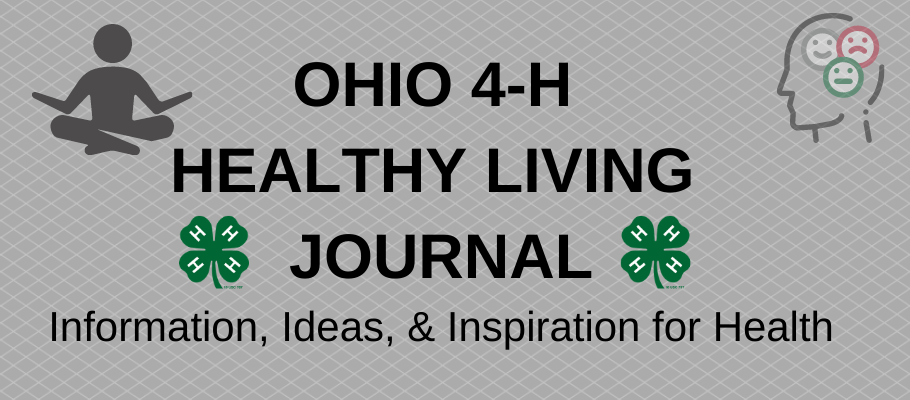by Theresa Ferrari, Extension Specialist, 4-H Youth Development
 Getting outside is good for your health! If you’re looking for some fun this summer, how about doing a scavenger hunt. A scavenger hunt is a game that starts with a prepared list of specific objects for participants to gather or locate. Scavenger hunts are more than just a way to keep busy, they are a way to build critical thinking skills and have fun at the same time. Scavenger hunts with players working in groups has the added benefit of fostering social connections and teamwork. They lend themselves to a variety of situations for many reasons.
Getting outside is good for your health! If you’re looking for some fun this summer, how about doing a scavenger hunt. A scavenger hunt is a game that starts with a prepared list of specific objects for participants to gather or locate. Scavenger hunts are more than just a way to keep busy, they are a way to build critical thinking skills and have fun at the same time. Scavenger hunts with players working in groups has the added benefit of fostering social connections and teamwork. They lend themselves to a variety of situations for many reasons.
- They don’t require many supplies, which makes them affordable and easy to implement.
- They can be as simple or elaborate as you want.
- They can be played as individuals or with teams.
- They can be customized to a variety of age groups.
- They are adaptable to small or large groups.
- They can be played in various ways.
Adults or teens can plan the scavenger hunt or turn the task over to younger children to create it (given some parameters and guidance). For example, camp counselors could plan a scavenger hunt for a Cloverbud day camp.
To create a scavenger hunt, you’ll need to decide on the elements such as the type and theme. Make sure to define if anything is off limits. Then follow these basic steps.
- Make a list of items for participants to find or things to do. A Google search will also turn up printable scavenger hunt sheets, such as this one.
- Define the search area (backyard, neighborhood, park, etc.)
- Decide on a time limit for completion.
- Decide how you will complete the game: Is it finding the most items? Or is the goal for everyone to find the items and share what they found? Are you going to do something with the items once your find them?
Scavenger Hunt Ideas

Scavenger hunts are a great way for kids of all ages to have fun and be active
- Items that are a particular color or shape
- Items that involve the senses: something smooth, something soft, 3 things you can hear, etc.
- Items to correspond to letters of the alphabet
- Items in nature: leaf, flower, feather, rock, twig, acorn, pine cone, bird’s nest, animal tracks, etc.
- Items in a neighborhood: traffic light, street sign, mailbox, flag, fire hydrant, fence, etc.
- Local landmarks or points of interest in the community (park, water, building)
- Players doing certain activities (making a silly face, climbing on a rock, standing on one foot, etc.)
Mix and match to add some challenge: a red door, a blue flower, a white car.
Scavenger Hunt Variations
- In a photo scavenger hunt, instead of collecting objects, players take a photo of the items they find, the places they have to locate, or the activity they have to perform. It would require participants to have a camera or smartphone to complete.
- A virtual scavenger hunt is a great way to connect with friends and family in different locations. The hunt occurs in various locations, but the items you search for are the same. Participants complete the scavenger hunt and then connect with other players over a video conferencing platform.
- Being outside is a way to get in some physical activity. Being out in nature has other positive benefits. Direct exposure to nature and the outdoors has been found to have a restorative and calming effect. It shifts focus and provides an escape. Check out this site for some ideas for a nature scavenger hunt.
- If fitness is your focus, direct participants to go to various locations and add in a physical activity to do at each location: 10 jumping jacks, walking lunges, push ups, etc.
- There’s an app for that! Scavenger hunts have gone digital! You can create one using the Goosechase. This free app lets you create and organize your own scavenger hunt, or you can use the bank of 100+ tested games.
Whatever format you decide on, have fun doing it! Happy hunting!
References
Beighle, A., & Darst, P. W. (2004). Fitness scavenger hunts for middle school students. Strategies, 17(6), 13–15. https://doi.org/10.1080/08924562.2004.11000369
Gruno, J., & Gribbons, S. L. (2020). Incorporating nature-based physical activity in physical and health education. Journal of Physical Education, Recreation & Dance, 91(3), 26–34. https://doi.org/10.1080/07303084.2019.1705210













